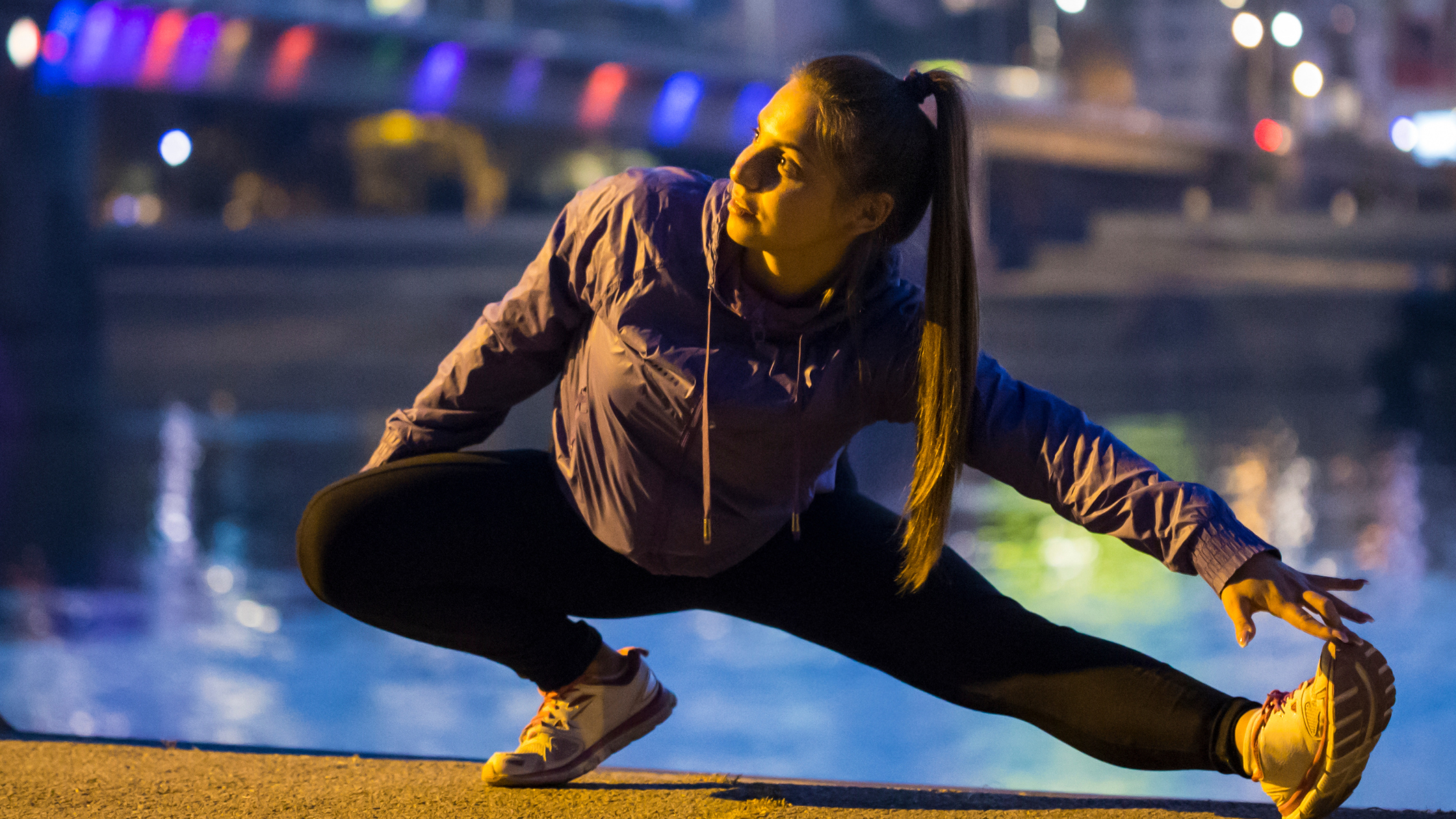
Early morning workouts have significant benefits, but are not always possible. Mornings can be so chaotic, with the main goal of just getting out of the door. But, exercising is still important and can promote health, sleep, and overall positive feelings about oneself.
Therefore, the only time left for working out is at night. Although research and sleep blogs advise you to avoid late night working out, the time of your workout is less important than the type of workout. Continue reading to find out the best and worst types of workouts before bed, and also some additional rules to keep in mind so you are not interfering with your sleep.
Benefits of Late-Night Workouts
Although there are concerns about working out at night, including disrupted sleep and elevated heart rate and blood pressure before bed, the National Library of Medicine has determined that there actually are significant benefits to working out. People who engage in late-night exercise actually have increased deep sleep which is essential for waking up feeling refreshed and aiding in muscle recovery.
Not only do you get these benefits, but you also aren't cutting into your sleep with the obligation for an early morning workout. If you went to be late, and decide you need some extra sleep in the morning, forcing yourself to get up may result in sleep deprivation. Not only that, but if you are too tired to get up, then you may miss your workout for the day, and initiate a continued pattern of missed workouts.
These are just a couple of the benefits of working out at night, but if you are going to switch your schedule, it's important to keep a few things in mind about the type of workout you do so you don't lose out on these great benefits.
High-Intensity Workouts
High-intensity workouts, like High-Intensity-Interval-Training (HIIT) are great for fat burning and increasing your cardiovascular activity. However, they are not great for your sleep. Doing HIIT workouts too close to bed can significantly interrupt your sleep.
HIIT workouts consist of short bursts of increasing your heart rate before letting it fall again during a short cool down. You do this continuously, sometimes ramping your heart rate up to the point of being out of breath.
This exercise is tremendously beneficial, but it disrupts your body's circadian rhythm, which is its internal clock that determines sleep-wake patterns. This can result in delays of melatonin production which is important for promoting sleep. This can lead to challenges falling asleep, which can increase sleep deprivation and the risk for injury and fatigue. These risks are counterproductive to your desire to stay healthy and fit, and are important considerations when planning your workouts.
Also, engaging in this type of exercise too frequently (more than 2-3 times a week) can lead to a condition called Cortisol Creep. This is a state of excess cortisol in the body, which can also affect sleep patterns and disrupt it, causing sleeplessness. Therefore, if you are going to do workouts late at night, then they need to promote sleep quality. If you are interested in doing HIIT-type workouts, then you need to plan to do those earlier in the day so your body can reset before it is time to go to bed.
Low-Intensity Workouts
The best workouts for sleep quality are low-intensity. For chronic insomniacs, moderate exercise can actually reduce the amount of time that it takes to go to sleep. Low-impact workouts don't negatively impact the internal clock and the time that it takes to go to sleep.
Having a regular exercise routine can help you reduce stress, which can reduce cortisol levels, improving your sleep quality.
So what are low-intensity workouts? Low-intensity workouts are steady-state exercises that don't cause rapid shifts in the heart rate. Going for a brisk walk or light jog are examples. Even lifting weights is considered a great low-intensity workout. Just avoid doing anything that would fall under the umbrella of a high-intensity workout right before bed.
Working Out Without Impacting Your Sleep
Figuring out the best workouts and schedule for you that don't disrupt your sleep can be tricky. Here are six rules to keep in mind when planning your workouts so you don't interrupt other vital aspects of your life, like sleep.
- Schedule your workout and be consistent with your exercises. This means setting aside time during your week to workout, and making it a non-negotiable. The more consistent you are, the more likely you are to start seeing results.
- Timing is very important, so you should plan to do them at least three hours before bed. This gives your body enough time to cool down and return to normal for your heart to slow to your resting state.
- Aim for low-impact, resistance training or aerobic workouts. They are the best to do before sleep, and you don't have to worry about high levels of cortisol interrupting your sleep.
- Stretch after your workout to help your muscles recover and reduce the risk of waking up with a middle-of-the-night cramp, or Charlie horse.
- Drink plenty of water before, during and after your workout. It's important to replenish your fluids, especially by drinking something with electrolytes. Going to bed dehydrated can impair sleep quality.
- Take some time to chill after your workout by taking a shower or listening to your favorite podcast. Whatever provides you with peace and serenity after working out is what you need to do to prepare your body for sleep.
If you struggle to fall asleep, and you don't think it has to do with your workout schedule, then you could be suffering from an underlying sleep disorder. Click the orange button below to take a free online sleep test and get in contact with one of our sleep health experts.
https://www.cnet.com/health/sleep/your-nighttime-workout-might-be-ruining-your-sleep/

